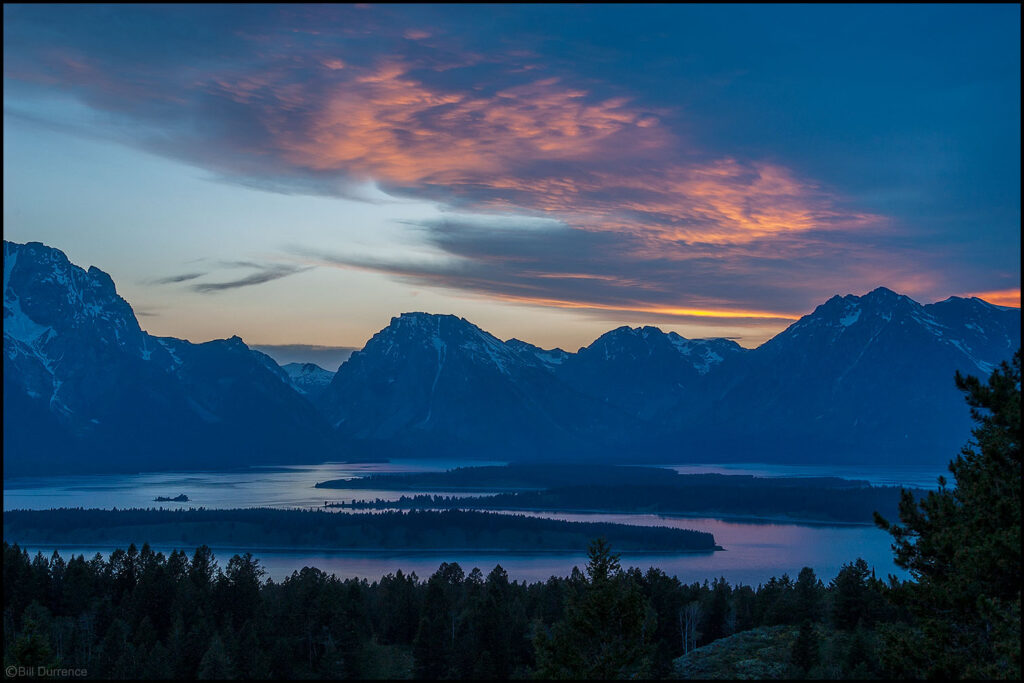Grand Teton N. P., Wyoming, 2002

Hiking in back country, some people will wear bells to alert bears to their presence. Some wilderness wags will tell you they can tell the difference between Black bear and Grizzly scat: the Black bear’s will have undigested berries, the Grizzly’s will include bear bells.
The Tetons seem to shoot straight up from the flat, glacially scoured landscape, unlike approaching most mountain ranges where the elevation gradually builds. The peaks are sharp and angular because they are a relatively new upthrust and not as old or worn as a place like the Appalachians. The tallest, Mount Moran, is almost 14,000 feet, and there are eight peaks over 12,000 feet. The first Europeans to see them were French-Canadian trappers who called the three largest mountains, “Trois Tetons.” Three breasts. Mount Moran was Grand Teton, “big tit.” Ya’ gotta love the French. They travel halfway around the world, into wilderness unlike anything anyone on Earth today will ever experience, and that was the first analogy that came to mind. Just to be clear, I like that.
I was cruising around the few small local roads that run through the park, because it is beautiful, and peaceful, and offers much opportunity for solitude. I was also scouting for a good sunrise photography location. Near the top of Signal Mountain Summit Road is a small parking lot for a short trail leading to Jackson Lake overlook, facing northwest across the lake and into the range. In the middle of a pleasant summer afternoon it was a short, easy hike, arriving at a view with some potential. Of course it will look different at sunrise, and the weather will impact that, too, but the only way to know what it will look like is to be there, at that moment.
To shoot sunrise you need to be onsite an hour before “official” sunrise and most of your best shots will be in the lead-up to the sun breaking the horizon. Sunrise comes very early in June in northern latitudes, and most locations will be at some distance from any lodging. So I got up in the middle of the night, in the middle of the dark (once you leave the lodging and commercial area there is very little artificial lighting), and headed out. The trail was not so easily seen in the dark, but I’d rather avoid a flashlight which will illuminate only what it’s pointed at and make everything else less visible. It’s also chillier at altitude and without sun, even if it is June. But I was ready, with Polartec, and a coffee thermos, and a camp stool, and cameras and lenses, and tripod. And I had the mountain top all to myself. Remembering it now, it sounds wonderful, although at the time I was probably thinking of how long it was going to be before I could go looking for breakfast.
I geared up at the car and headed down the trail. Almost immediately I realized I didn’t know if a moose or bear might be using the same trail. I don’t remember what I sang, but I sang loudly, enthusiastically, much more than I ever will in public. I banged my stool and tripod against each other. I scuffed my feet. I made all the noise I could just so I did not surprise any cohabitant. It either worked, or there was nothing there. Moot point.
For more photographs, go to https://www.billdurrence.com/index
